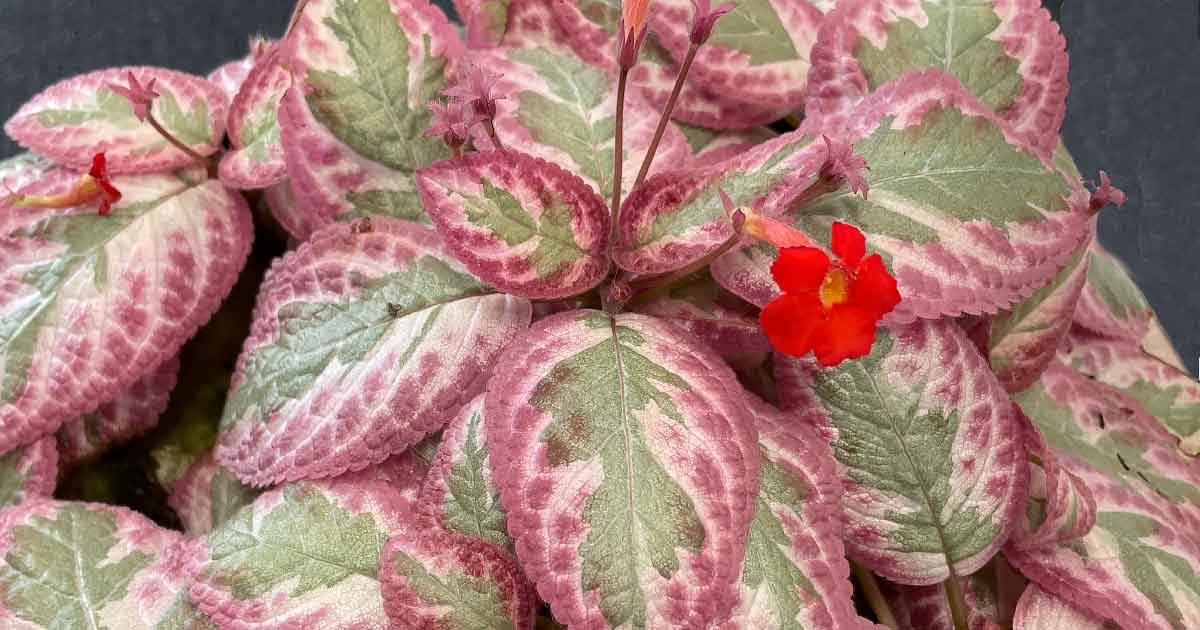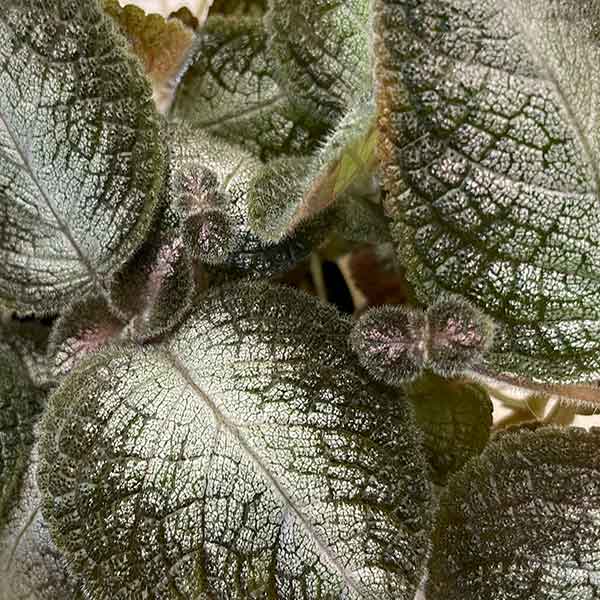
Episcia are related to African Violets, and with only around 10 species they are grown for the very attractive foliage.
Originating in Central and South America they are a tropical plant and are grown as house plants. These are an understory plant so grow naturally in shaded areas. They do flower, trumpet shaped, mainly red to orange and yellow, also blue, however the foliage which takes on a metallic look and is beautifully patterned is the main attraction.
This is a plant that has had a few common names, ‘Trailing African Violet and Flame Violet are two.
How to Grow Episcia
Soil/Potting Mix

Firstly its the soil and this needs be free draining and rich in organic matter. A mix of leaf mold, peat moss, washed river sand and sandy loam works well. Use the following proportions
- 1 Part Leaf Mold
- 1 Part peat moss
- 1 Part washed river sand
- 2 Parts Sandy Loam
Watering
It is simply a matter of maintaining a moist soil, however never wet and soggy. So test by pushing your finger down into the soil.
Along with watering comes HUMIDITY, but its not the same thing.
50% plus humidity is required, so you can either stand the pots on pebbles over a tray of water (not in it) or us a humidifier.
Mist spraying is NOT recommended as you will find that this leads to fungal problems at worst and spotted leaves at best. This is because of lack of air circulation in most indoor situations.
If you have good air circulation misting can be OK.
Light
Simply use bright indirect light, never direct sun. Lack of light will cause poor growth and foliage colour, full sun will cause leaf burn.
Temperature
Ideal temperature range is 71 – 75°f (22-24 °C) a 61F (16c) overnight minimum is best and a maximum of 95°f (35°C) is recommended. At temperatures above 77°f (25°C) you will need to increase humidity.
Fertilizer
Use a 1/2 strength liquid indoor plant or African Violet fertilizer every 3 weeks from spring through summer

